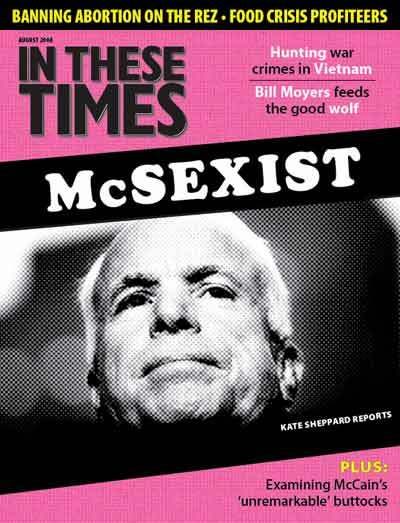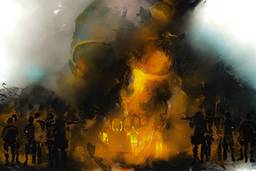
Globally, 1 billion overweight people coexist with 800 million starving people.
That’s one of many perverse facts in Stuffed & Starved: The Hidden Battle for the World Food System (Melville House, April 2008, U.S. release), author Raj Patel’s searing indictment of the forces that shape what and how we eat.
Patel is an ideal candidate to explain this tragic paradox: He has worked for the World Bank, the World Trade Organization (WTO) and the United Nations. But as the book’s back cover notes, he’s also been “tear-gassed on four continents protesting them.”
Patel writes that he is appalled by global food inequality, but he tempers his anger with the informed and sharp analysis of a policy-wonk (he’s now a visiting scholar at the University of California-Berkeley).
Patel is more precocious tour guide than dispassionate academic. He details the causes of agricultural crises around the world, from the suicides of indebted Indian farmers to the tens of thousands of slaves supporting Brazil’s rapidly growing soy industry.
And that is Stuffed & Starved’s chief strength and weakness: Throughout 300-plus pages, Patel’s wide-angle lens and agile intellect chronicle so many people, on so many continents, that the book ultimately is more a lucid list of injustices than a cogent argument.
And yet it should serve as an invaluable primer for anyone new to the politics of food. With a problem as complex and as hidden from affluent consumers’ appetites as our food system, descriptions of how that system undermines farmers’ livelihoods are in order.
Patel writes about how Britain’s colonial-era food system – built through Caribbean plantations and settler colonies – is a prelude to post-World War II U.S. food aid and development policies. He cuts a devastating path through the origins of the global food system and its increasingly transnational corporate management: from British imperialist Cecil Rhodes (who said, “The Empire … is a bread and butter question”) to Americans, such as Earl Butz, Nixon’s agricultural secretary (“Food is a tool. It is a weapon in the U.S. negotiating kit”).
On the issue of the WTO’s food trade policies, Patel alleges agricultural imperialism:
Rather than using food aid to demonstrate its largesse, the U.S. developed sophisticated new trading arrangements, while continuing to support its farming industry, and regulating the international domain through debt. … [The WTO’s] new constitution for global economic development wasn’t designed to deliver wholesale improvements in the quality of life of the poorest. It sits, rather, as the latest episode in the long history of the generation of supplies of cheap food to prevent insurrection.
To Patel, industrialized countries never give food freely to needy countries in the “Global South.” In other words, there is no free lunch.
Stuffed & Starved at times treads ground that may be well known to many progressives. It reviews how the United Fruit Company (now called Chiquita) spawned “Banana Republics” in Latin America, how modern famines don’t occur for lack of food, and how billion-dollar American and European agricultural subsidies ruin Third World farmers.
But the book’s brilliance lies in its micro-histories of things you thought you knew – such as supermarkets, which Patel labels “the high temple of the modern food system,” and TV dinners, which he traces to a 240-ton trainload of frozen turkeys looking for a home in 1953.
Unfortunately, after unveiling obscure facts of the modern food world, Patel offers only familiar prescriptions for change – avoid processed foods, eat locally and seasonally, and support local businesses and farm workers’ unions.
Still, he challenges many consumers’ comfortable assumptions, like the ability of mass-produced organic and “fair trade” foods to fundamentally change our system of food production. Supermarkets, Patel writes, are “where we learn to forget how things are produced and learn the guilty and addictive pleasures of purchase. They can, at best, only offer social change as a bauble, dangled in front of the consumer, far from the engines of profit and exploitation.”
He says real change can arise from an ambitious list of government policies: ending subsidies to agribusiness, taxing processed food to reflect its negative health and environmental effects, canceling debt and paying reparations to developing countries, and ensuring living wages for all, so all can afford to eat well.
A tall order to be sure, and one that governments will likely never fulfill voluntarily. Which is why one of Stuffed & Starved’s last insights may be more important than Patel’s calls for change: “[A]lthough it is controlled by some of the most powerful people on the planet, the food system itself is inherently weak.”
As the perfect storm of high fuel prices, bad weather, biofuels and speculation continues to roil markets, drive up food prices and push millions of hungry people into the streets, this paradox becomes more apt. In this moment of awful weakness, “food sovereignty” – the notion that people and countries have the right to define their agricultural policies and protect their food supplies – just might have a fighting chance.
As its subtitle promises, Stuffed & Starved reveals movements that are trying to change what and how we eat. But the “battle for the world food system” is hardly singular.
Until this year’s scattered food riots become one movement for change lasting beyond the next round of U.N. World Food Program shipments, the world is likely to become more stuffed and more starved.
Jeremy Gantz is an In These Times contributing editor working at Time magazine.









